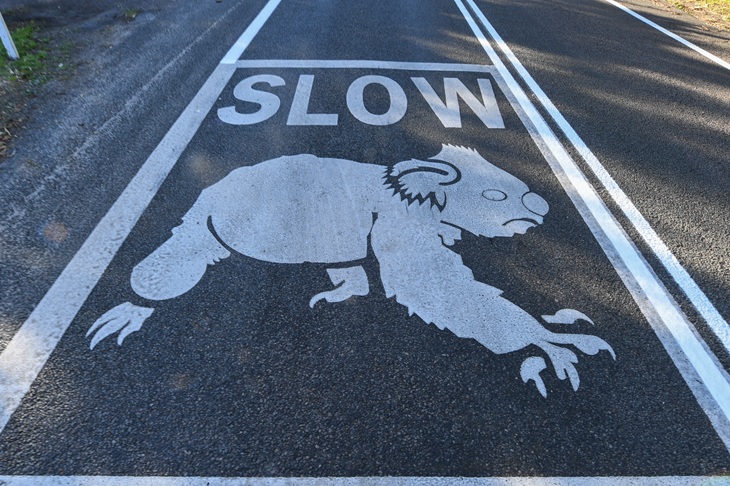
Koala warning signs on and by the road on June 26, 2020 in Soldiers Point, Port Stephens, NSW, Australia Koalas live in the area and local wildlife organisations ensure warning signs are maintained on the roads and beside the roads to ensure motorists slow down.
A proposal by the New South Wales (NSW) government to reduce speed limits on rural roads has sparked heated debate among motorists and safety advocates. Ministers John Graham and Jenny Aitchison are considering lowering limits from 100km/h to as low as 70km/h or 80km/h on unsigned roads. This initiative, framed as a part of the National Road Safety Strategy, aims to enhance safety but raises concerns about its actual impact on regional drivers.
Critics argue that lowering speed limits does not necessarily lead to improved safety. They highlight the experience of riding a Learner Approved Motorcycle Scheme (LAMS) motorcycle on stretches like the Hume Highway. The challenge is not just about adhering to speed limits but also about managing the risks posed by larger vehicles like B-double semi-trailers. The current conditions on roads such as the Hume Highway present a daunting environment for novice riders, particularly with the combination of speed limits and heavy traffic.
Recent changes in speed limits along routes, such as the 30km stretch from Gundaroo to the Federal Highway, have already seen speed limits cut from 100km/h to 80km/h. Local drivers have reported feeling less safe on these roads, as they navigate not only lower speed limits but also poorly maintained road conditions, including potholes and rumble strips that complicate safe driving.
The government’s rationale for these proposed changes stems from statistical models suggesting that lower speeds can lead to fewer fatalities. The initiative is backed by findings from international studies and Nilsson’s power law, which asserts that reducing speed decreases crash severity. While this theory may hold true in controlled environments, critics argue that it fails to account for the unique conditions of regional NSW. In vast, sparsely populated areas, lower limits could contribute to driver fatigue and inattention, which are significant factors in accidents.
Opponents of the policy warn that reducing speed limits on key freight routes like the Hume and Newell Highways could have detrimental economic effects. Transporting goods efficiently is crucial for regional economies, particularly in areas recovering from drought and the impacts of the COVID-19 pandemic. Farmers, truck drivers, and families traveling for essential purposes could face increased travel times and elevated fuel costs due to the proposed changes.
The Regulatory Impact Analysis acknowledges that the costs of longer travel times could escalate into billions of dollars nationally. Despite this significant concern, the analysis dismisses these economic implications in favor of perceived societal benefits. Critics argue that such a one-size-fits-all approach neglects the realities faced by those in remote areas, where public transport options are limited and the tyranny of distance is a daily challenge.
The consultation process regarding these changes has been criticized as inadequate, with some viewing it as merely a formality following backlash from various stakeholders, including regional community groups. Many believe that the focus should shift from punitive measures like speed reductions to improving road infrastructure. Investments in sealing unsealed roads and addressing maintenance issues such as potholes would likely yield greater safety improvements without penalizing drivers.
Evidence from past reductions in speed limits in South Australia is often cited to support these proposals. However, regional contexts differ significantly, and many roads in NSW are well-maintained gravel tracks familiar to local drivers. This raises questions about the blanket assumptions made regarding road safety across different regions.
As the debate continues, the urgency for policymakers to understand the practical realities of driving in regional NSW grows. The experiences of those who navigate these roads daily cannot be overlooked. Advocates emphasize the need for a balanced approach that prioritizes safety while also respecting the needs of regional communities.
Residents of NSW are encouraged to engage in the ongoing consultation process and voice their concerns regarding the proposed speed limit reductions. The emphasis should be on ensuring that safety measures are informed by real-world experiences and that investments are made in infrastructure that meets the needs of all drivers.
As discussions surrounding road safety evolve, it is clear that the path forward must prioritize practical solutions over paternalistic policies. The question remains: how can NSW truly enhance road safety without imposing unnecessary restrictions on its drivers?







